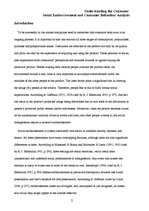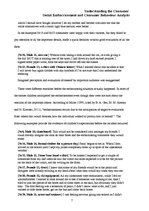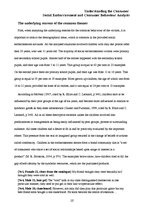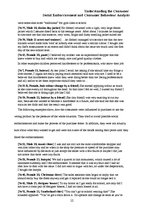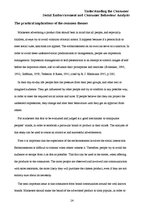-
Understanding the Consumer: Social Embarrassment and Consumer Behaviour Analysis
| Nr. | Sadaļas nosaukums | Lpp. |
| INTRODUCTION | 2 | |
| THE COMMON THEMES RUNNING THROUGH THE CONSUMPTION-RELATED SOCIAL EMBARRASSMENT ACCOUNTS | 4 | |
| THE UNDERLYING REASONS OF THE COMMON THEMES | 10 | |
| THE PRACTICAL IMPLICATIONS OF THE COMMON THEMES | 13 | |
| BIBLIOGRAPHY | 15 |
The practical implications of the common themes
Marketers advertising a product first should bear in mind that all people, and especially children, always try to avoid violation of social norms. It happens because if a person fails to meet social rules, sanctions are applied. The embarrassment on its own can serve as a sanction. In order to avoid these undesired social predicaments or transgression, people use impression management. Impression management or self-presentation is an attempt to control images of self before the important others, and to influence their perceptions and reactions (Schlenker, 1980, 1982; Goffman, 1959; Tedeschi & Riess, 1981; cited by R. J. Edelmann 1985, p 200).
In their day-to-day life people face the pressure from their peer groups, and other real or imagined audience. They get influenced by other people and try to conform in any possible way, in order to meet the required social norms and rules. If people believe that they can project the undesired impressions, they change and alter their behaviours until they get an approval from others.
For marketers this fear to be evaluated and judged is a good mechanism to manipulate peoples’ minds, in order to establish a particular brand or product in their minds. The analysis of this essay can be used to create an attractive and successful advertisement.
…
To be successful in the market companies need to remember that consumer behaviour is an ongoing process. It is important to take into account all three stages of consumption: prepurchase, purchase and postpurchase issues. Consumers are attracted to the product not only by its quality and price, but also by the experience of acquiring and using the product. These personal or social, past experiences form consumers’ perceptions and attitudes towards or against buying the particular product. Before making their choices people evaluate the product itself, the environment around it and, what is very important in nowadays-commoditised world, the attitudes of the other people to the product. The latter factor plays a significant role in creating the image of a person in the society. Therefore, people fear to fail to fulfil certain social expectations. This essay will provide a result of the detailed analysis of 55 anonymous consumer embarrassment stories. First, the most important common themes running through these accounts and types of common and significantly different behaviours will be examined. Second, the underlying reasons for these behaviours will be investigated. In the conclusion the practical implications of these themes will be described. It is important to highlight that the practical implications will be focused on the companies marketing their products to the purchasers of the products that caused the social embarrassment, and to the consumers that were the victims of these social embarrassments.


